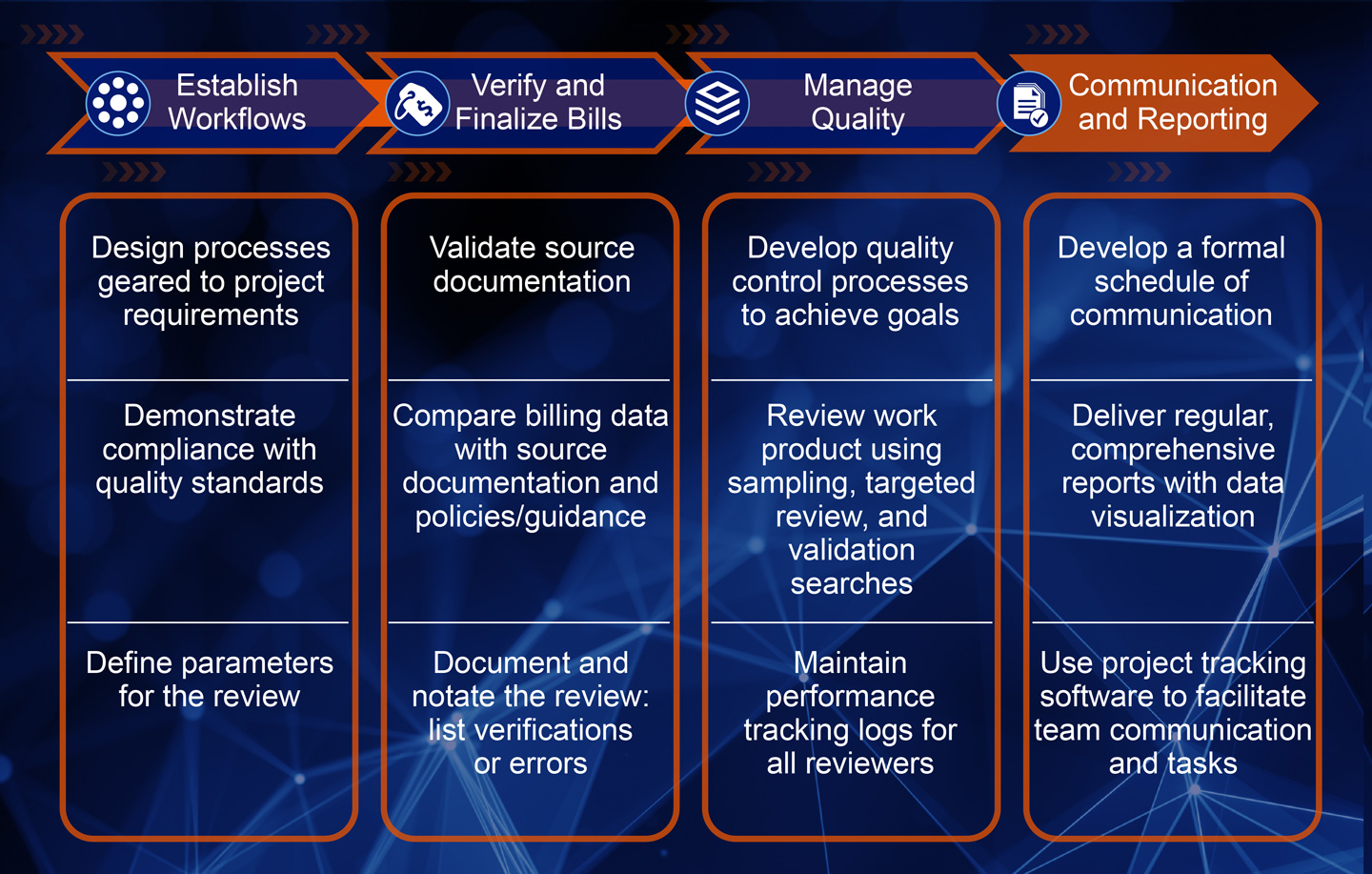
Exciting Results Behind the Scenes of Account Reconciliation
Brad Hallman Performance Optimization, Agile Project Management, ManagementWhile most people might not get excited about accounting processes, LMI’s Financial Operations and Accountability practice area has created some exciting results through our highly effective account reconciliation process for General Services Administration’s National Rent Bill Office (NRBO), which oversees the world’s largest inventory of real estate property. At its core, account reconciliation compares transactions to supporting documentation—a process that helps identify mistakes and discrepancies and reduces the risk of fraud, waste, abuse, and audit findings. For over 10 years, our team has developed and executed a standardized account reconciliation process methodology in which bill requests submitted to NRBO are reviewed and adjudicated with near-perfect accuracy.

As depicted in the graphic, our account reconciliation methodology is comprised of four phases:
- Establish workflows
- Verify and finalize bills
- Manage quality
- Communication and reporting
To establish and document workflows, we utilize mapping tools that clearly identify steps in the process from start to finish, and test the documented workflow by processing payment requests, identifying issues, reviewing the issues, and either initiating or developing resolution planning, bringing clarity to all stakeholders on how to accomplish the work.
Next, we verify and finalize billing, beginning with detailed reviews of all requests and analysis of source documentation against review parameters to determine compliance. We compare the billing data to provided source documentation to determine if a bill is compliant with review parameters, and then either accept or reject the bill. If rejected, we document the specific review findings that resulted in the decision to reject the bill. After a comprehensive review and approval, a finalized bill is submitted and sent to the customer.
We follow quality assurance and control processes to ensure that customer expectations are met and exceeded. We apply the DMAIC (define, measure, analyze, improve, control) methodology to identify continuous improvement opportunities. We identify and measure process errors to quantify our review effectiveness, and analyze process metrics to make corrective action if needed. We then refine standard procedures based on issues identified. By following these steps, we greatly increase the opportunity for an expected output and reduce variation throughout production. We ensure quality by conducting spot checks during processing to confirm that outputs/work products are correct. The work product is audited by a subject matter expert (SME) and any discrepancies or errors are immediately reported to the customer, so corrections be made. The lessons learned from the quality assurance and quality control (QA/QC) process are incorporated in training sessions to improve quality, thereby increasing accuracy.
Finally, our communication and reporting process ensures our customers receive constant and consistent updates. We utilize project tracking software to facilitate team communication, task completion, and concise report generation. Our team of experts employ an array of applications such as Microsoft (MS) Teams, SharePoint, MS Project, JIRA, and Google Workspace to maintain an effective collaborative environment.
Our process is fed into data visualization dashboards that are easily customizable to ensure customers can make data-driven decisions.
Our method for developing a formal communications schedule creates safeguards against risk to meet deadlines in a timely manner, and aligns to customers’ timeframes and project scope, enabling our teams and customers alike to meet demands and deliver results to every stakeholder.
Each step, decision, and interim result within our process is fed into data visualization dashboards that are easily customizable to ensure customers can make data-driven decisions and provide up-to-the-minute results to superiors.
Need help with your organization’s account reconciliation process, or just have general questions about our proven process? Contact LMI’s Financial Operations and Accountability Practice Area Lead, Brad Hallman at bhallman@lmi.org.



